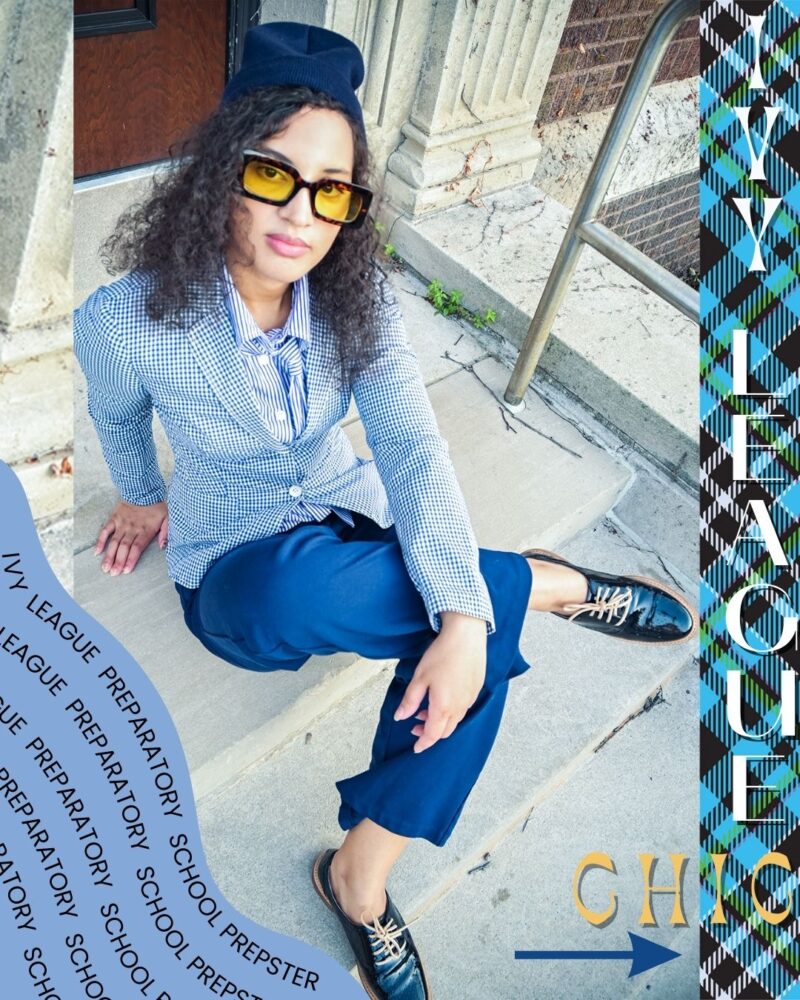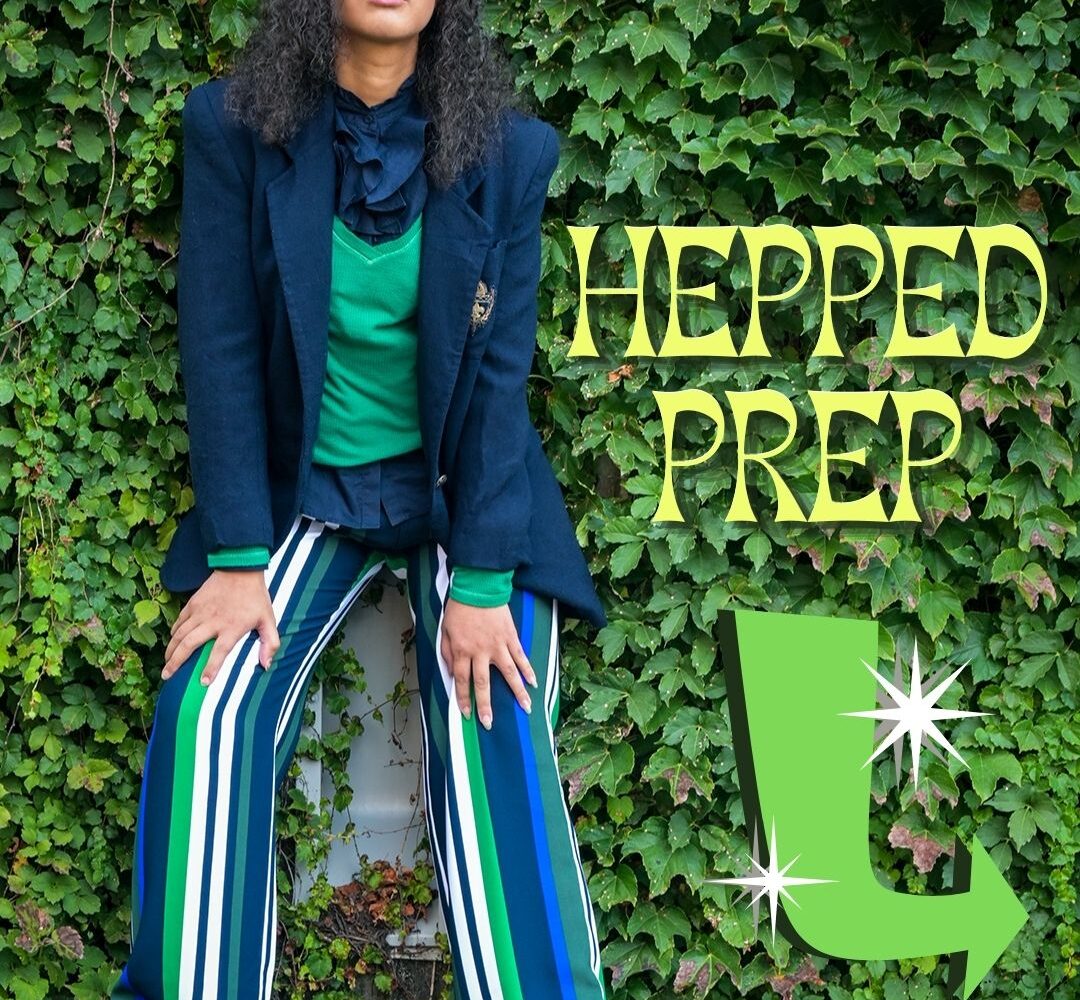
Hepped Prep: Of Hipsters, Hep Cats, and Prepsters
It’s 2022, and we’re loving the resurgence of preppy style. Not familiar with prep fashion? Take a seat. Class is in session as Always Uttori explores what makes preppy fashion such a mainstay on the runway. If you’re into preppy fashion, also called prepster or prep fashion, then you know that it’s an off-shoot of the uniforms required by the preparatory schools attended by the wealthy in Britain and Northeast America during the 1900s. Hollywood made the style popular by featuring the fashion worn by those of elite status. Soon, preppy fashion began to populate the fashion landscape. From blazers to polos, loafers to neckties, these layered styles denoted wealth, privilege, and leisure.
That was then . . . But what about now?
As long as educational institutions dictate fashion, prep style probably won’t go away. As for the runway, preppy fashion goes in and out of “style” frequently, its most recent heyday having occurred during the 1980s and 90s, with brands like Ralph Lauren, Lacoste, and Izod popularizing prep style and films like 1995’s Clueless solidifying the style into the cultural zeitgeist.
The prep aesthetic fell out of favor in the 90’s and early 2000s with the rise of grunge and hip hop fashion. Since that time, the prep aesthetic has made a few mini-comebacks, but with the adoption of more casual styles, prep seemed too stuffy and out-of-touch with modern sensibilities. Then came the pandemic. For two long years, we were all stuck at home. During that time, fashionable meant wearing a printed robe instead of a plain one. Yeah. So, the end of the pandemic meant time for a fashion reset. Before the pandemic, prep style just happened to be making noises about wanting a comeback, but for pandemic weary fashionophiles, the classically refined style of prep, as represented by the rise of plaza core, seemed just a bit boring for a redux.

And that’s how prep got hepped
What is hepped prep? Well, nothing in fashion is really new, and the same is true for hepped prep. Unlike 80’s plaza core style, hepped prep is relaxed with just a hint of the stiff, upper lip. Hepped prep keeps the blazers and loafers, and sometimes even the necktie, but whereas prep style is about maintaining a sense of decorum, hepped prep is about not only bending rules, but breaking them. Hepped prep thrives on the unexpected. In hepped prep, colors are bold. Color pairings are funky and mismatched. Patterns are stripes on stripes, stripes that vary in size and/or direction. Other heps allow for the touches that make the look personal, like adding a favorite pair of flowered socks to a look, wearing a ruffled blouses instead of a tie, or wearing velvet ribbons instead of shoestrings in your Oxfords. Hepped Prep celebrates individuality, replacing the boring banality of classic prep style with bold colors, varying prints, and quirky accessories. This isn’t your J.Crew prep of the 80s and 90s. Hepped prep has its roots in the 1930s and 1940s when hep cats were whilin’ and stylin’ and hipsters were the talk of the town.

The Folkways of Hepped Prep
While standard prep has its roots in the lifestyles of the 1900s rich and famous, hep prep arose from the streets of Harlem and jazz era musicians like Duke Ellington, Louis Armstrong, and Cab Calloway, who besides being a popular jazz era bandleader, wrote the Hepcats Jive Talk Dictionary. It was in the jazz clubs and speakeasies of the 1930s and 1940s that both hepcat culture and fashion originated. According to Calloway’s dictionary, hep cats were those who knew all the answers and understood how to speak jive. As jazz grew in popularity across America, hep and hip became synonymous. Those who were into jazz music and culture came to be known as hipsters. As the jazz craze died out in the 40s, the word hipster began to take on a more negative connotation that remains to this day. The 1950s hipster was described as being a philosophical psychopath interested only in thinking about the assumptions their inner universe was composed of.
With that, the term hipster died out until it was resurrected in the 1990s with the rise of indie youth culture. Modern hipsters have gotten a bad rap. They are often described as a subculture with no actual defining characteristics. As such, the word hipster has been used more often as an insult to say someone is trying too hard, has a unique hobby, or is stylish, knowledgeable, or otherwise culturally savvy. Officially, a hipster is defined as following the latest trends and styles, especially if it’s counterculture or outside of the mainstream. In the current fragmented culture landscape, where the mainstream is being chipped away by fierce individualism, it’s easy to see how hipster became such a broadly defined subculture because everyone is a hipster in some capacity.

The 21st Century Update
What this brief history tells us is that fashion doesn’t just arise out of nothing. Prep fashion arose of our preparatory schools for the wealthy and elite. Preppy fashion was democratized by the jazz culture icons of black America. And any new incarnation of preppy fashion have deep stylistic roots to draw from because the styles were more than trends, they were reflections of American folkways. The folkways included language, music, and an embrace of individuality. As we look for ways to bring joy back after the pandemic, we can look to various prep styles, whether classic prep, plaza core, or hepped prep for a 21st century update.


